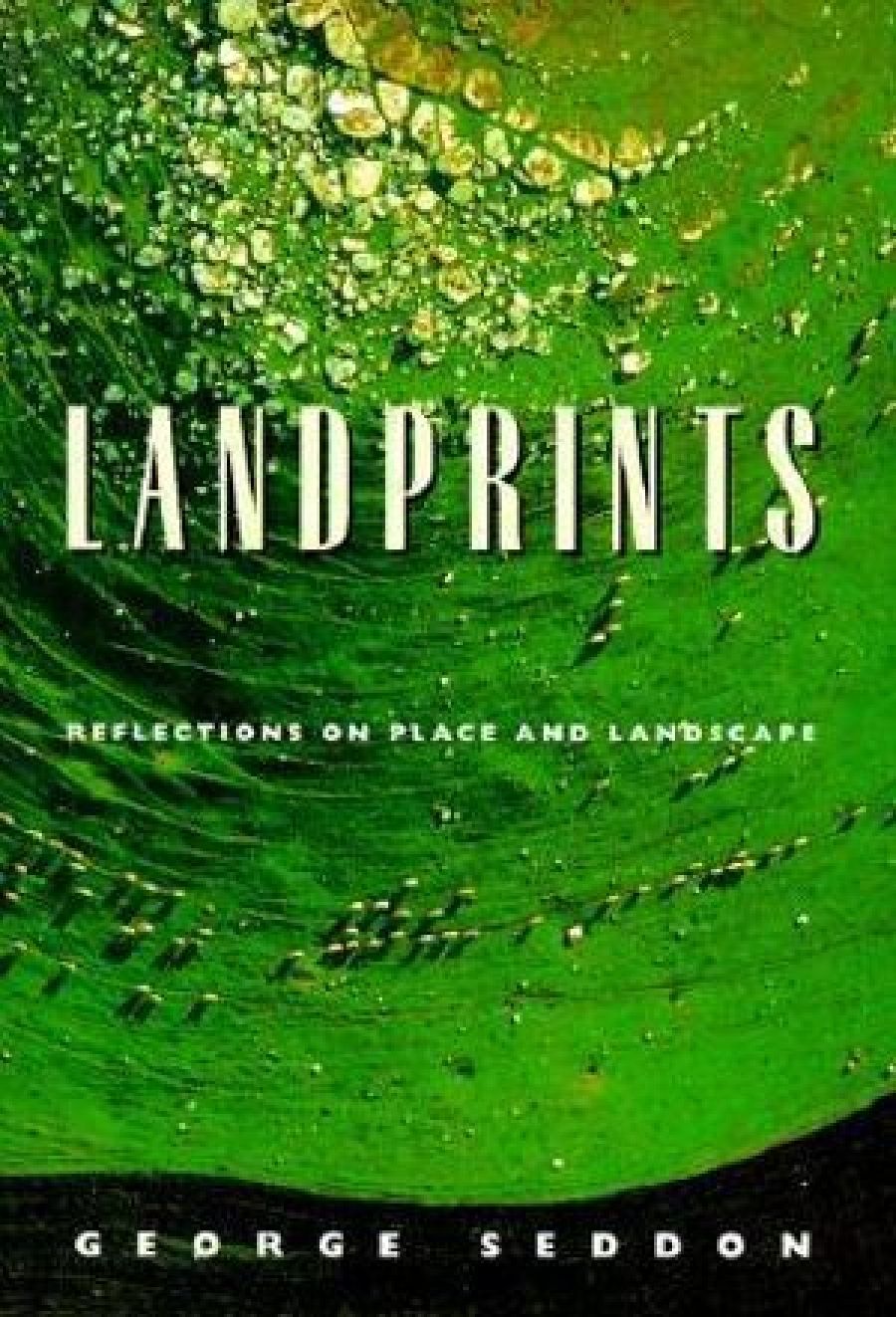
- Free Article: No
- Contents Category: Nature Writing
- Review Article: Yes
- Article Title: Interpreting the Landscape
- Online Only: No
- Custom Highlight Text:
George Seddon is well-known as an environmentalist and academic. Western Australian readers will remember in particular his Sense of Place (1972). He is currently an Honorary Senior Research Fellow in the Centre for Studies in Australian Literature at the University of Western Australia and Emeritus Professor in Environmental Science at the University of Melbourne.
- Book 1 Title: Landprints
- Book 1 Subtitle: Reflections on place and landscape
- Book 1 Biblio: CUP, $39.95 hb, 314 pp
Landprints is a collection of some of his significant essays since the early 1970s, or rather it has been rerecorded as a ‘fugue for six voices’ complete with prelude and coda. This book is for Seddon fans who would rather have the boxed set than chase up the single articles, but it is also beautifully presented by Cambridge with colour plates and new connecting texts. The great thing about Seddon is that he knows what he is talking about: ‘I have heard a tattered few acres that has been logged, burned and cleared three times in a hundred years, and is now tertiary regrowth Eucalyptus woodland choked with blackberry and watsonia, described and ardently defended as ‘natural bushland’. Wilderness freaks will find no ally here. He can produce an argument as to why electric power lines through Kakadu is a good energy solution for that place. His writing is never cynical however, rather it is ardently possessed of a sense of Australianness which has not only taken him all over the country, from the Kimberley to the Snowy River, but also from the backyard (he is one of the few people to have written on this important icon) to Snugglepot and Cuddlepie. This is writing which has that good old Australian democratic temper while at the same time cutting through the bullshit.
As criticism this is good work without being philosophically profound. In his analysis of Paul Carter’s Road to Botany Bay he circles warily around the text, analysing the critical responses of other reviewers, before offering his own encapsulation of Carter: ‘It is … Lit. Crit. – textual exegesis – but applied to primary historical sources’ which makes that author sound rather more derivative than he would probably like. Seddon’s conclusion ‘that there is more than one way of knowing, with different claims on our attention’ is the pluralist critical move which characterises his texts, but is ultimately somewhat dead-end, neither locating Carter precisely enough, nor energising his own essay.
Seddon’s value, and values, lie in plurality and particularity. He knows there is no point seeking simple solutions for complex problems, so in analysing the ‘rhetoric and ethics of the environmental protest movement’, he usefully characterises the camps of the ‘Jacquards’ (shallow doomsayers), the ‘revivalists’ (threatening hell-fire, offering salvation) and the naive anti-urban ‘bucolics’. Seddon himself comes down on the side of ‘the custodial view’, and he retains an optimism in the self-reforming capacities of Western society, sensibly arguing in addition that it is counter-productive to destroy the faith of the young in their own society. I wonder though, in passing, whether he would think Aboriginal leadership in this custodial matter is appropriate, or whether it would be at the nexus of some other bucolic or revivalist attempt to co-opt the ‘first nations’ of this country.
This book will be required reading for students and general readers in landscape architecture, the environment, ecology, Australian studies, even’ natural history’ if there is still such a category, and it may be that the author lies in that venerable tradition. There are so many serious gardeners too who would enjoy Seddon’s anecdotes about his own gardens in various cities in Australia (we are treated to a colour pie of his own Fremantle ‘brick garden’ which has a definite ‘Tuscan’ feel). Amateur and professional landscapers will also find a lot to discuss in this book because there is much practical wisdom about and knowledge of the particularities of the Australian environment. Professor Seddon is clearly a wonderful teacher, showing how quickly things can change and why, how little really is known about Australia, and how much more there is to find out.


Comments powered by CComment